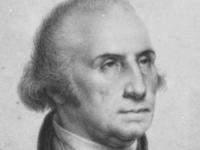Answer: The Whiskey Rebellion
In March 1791, Congress passed an excise tax on domestic whisky to help pay off its debts. Resistance to the tax occurred in a number of states, including Kentucky, North Carolina, and Pennsylvania, especially in the western part of the state where whisker was a common bartering tool.
Protests against the tax started in western Pennsylvania in the latter half of 1791, and continued for a couple years, well into 1793. These protests ranged from peaceful to violent, and tax collectors were often harassed. In late 1792, President George Washing condemned the tax resistors with an official proclamation. Tensions lessened somewhat in early 1794 when Congress amended the tax law to allow distillers to see to the U. S. Army. Events came to ahead in late 1794 when Washington sent the military into western Pennsylvania to quell further opposition. This resulted in the arresting of twenty suspects who were brought back to Philadelphia for trial.
The suspects were held for some time in jail, and eventually ten were tried for treason in 1795. Of the ten, only two men were convicted of federal treason – these were the first federal treason convictions in the nation. Due to their ill mental states, both men were pardoned by President Washington.
Portrait of George Washington published by William Pate, print (undated), William Spohn Baker collection of Washingtoniana (Collection V67), The Historical Society of Pennsylvania.
Researchers can find more information on the Whiskey Rebellion in a number of HSP manuscript collections, including the United States Army record of orders issued during the Western Insurrection (Am.661), the John Hugg Clunn journal (Am.6618), the Rawle family papers (#536), and the Jasper Yeates papers (#740).

